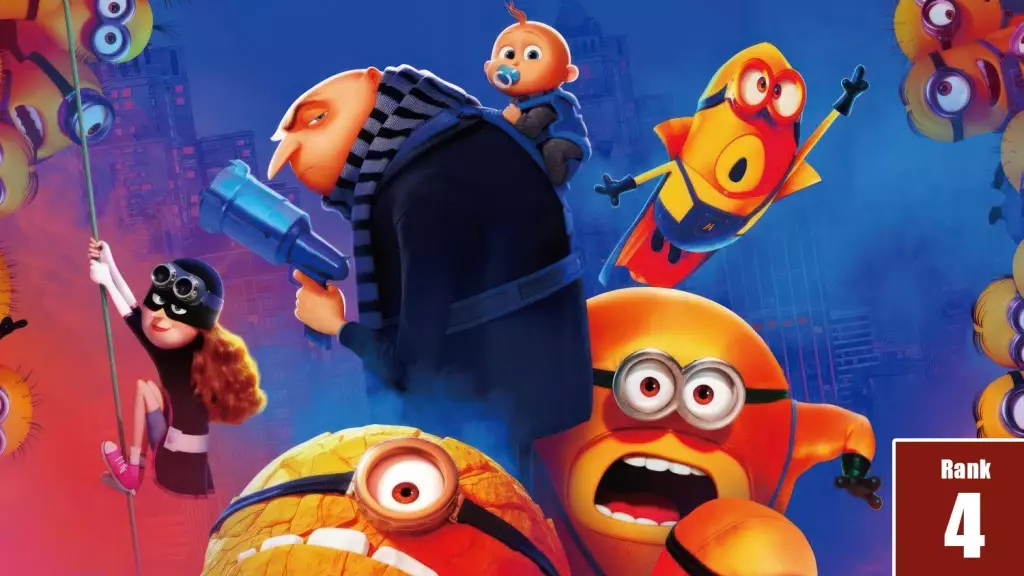The 2024 film landscape saw a fierce competition among blockbuster titles, but standing tall amidst a sea of sequels and reboots is *Despicable Me 4*. This film is not just another entry in the beloved franchise; it’s a remarkable culmination of business acumen and cultural relevance that proves how well a well-crafted narrative can adapt and thrive. Forget the narrative that cinema is in decline; films like this remind us that with clever marketing and relatable characters, staggering success is not only possible but likely.
Understanding the Revenue Streams
One must consider the financialmatrix that surrounds a blockbuster’s success. Unlike traditional interpretations of profitability which focus solely on box office earnings, *Despicable Me 4* exemplifies the multifaceted revenue model that contemporary films operate under. You have streaming deals, merchandise, and promotional tie-ins that essentially create a financial ecosystem around a film. Universal’s decision to allocate $170 million for a global marketing campaign paid off immeasurably, but it’s clear that the synergy between the theatrical and streaming releases effectively maximizes their revenue potential.
The earlier exclusion of Apple and Amazon from profitability assessments is telling. It suggests a fundamental shift in how studios and streaming services evaluate success, highlighting a growing undercurrent of competitiveness between traditional studios and newer streaming platforms. In a year packed with financial disappointments for higher-budget films, the financial architecture of *Despicable Me 4* stands in stark contrast, revealing a strong foothold that other films lack.
A Franchise That Understands Its Audience
Celebrating 15 years in the entertainment arena, the star of Universal’s animated giant—the character Gru—has become synonymous with clever humor and universal appeal. The introduction of new characters, such as Gru Jr. and Maxime Le Mal, keeps the franchise fresh while retaining its core values. Steve Carell and Will Ferrell’s comedic chemistry generates quality moments, but what truly works is how these characters embody the absurdity of parenting and rivalry.
The motives behind characters are not just aimed at entertaining kids; they strike chords with parents dealing with similar situations in day-to-day life. Marketing campaigns that tap into social media trends—like Nikola Jokić drawing attention dressed as Gru—integrate the film seamlessly into current pop culture, extending the film’s reach far beyond the confines of its run time.
Cultural Resonance Beyond the Screen
Digital marketing in today’s world isn’t just about trailers and posters; it’s about influencing public conversations. The promotional strategies for *Despicable Me 4* included pop-up experiences in global cities, capturing the imagination of fans and fuelling social media buzz. The viral nature of the franchise indicates a deeper relationship with its audience. This viral marketing, encompassing memes and funny interactions between characters, pushes the film from merely a visual experience to a shared cultural phenomenon.
With social media engagement upwards of 66 million views, the film has expertly woven itself into the fabric of viewers’ everyday lives. The resonating humor doesn’t just entertain; it brings people together, making them participants in a shared experience that transcends the traditional viewing experience.
The Cost of Production and Its Impact on Profitability
One of the most remarkable aspects of *Despicable Me 4* is its prudent approach to budgeting. With a $100 million production cost relatively frugal for a major animated film, Universal’s choice highlights their adeptness at managing resources effectively. This allows more revenue to flow freely into profits, creating a net gain of an impressive $370 million after accounting for expenses—a remarkable feat in an industry often marked by extravagant financial missteps.
Moreover, as the film utilizes its impressive $775 million global revenue strategy, the scaling of costs is another lesson that Hollywood must heed. The intelligence involved in controlling production expenditures without compromising quality underlies much of this success. In a year defined by costly failures and disappointing releases, *Despicable Me 4* serves as a case study of how to marry creativity with fiscal responsibility.
The Surprise Success Story and Lessons Ahead
*Despicable Me 4* is not just a success story but a blueprint for future filmmakers. Its dual commitment to creativity and shrewd financial planning highlights a pragmatic path forward for the industry. As Hollywood navigates an ever-evolving landscape, finding balance between artistic vision and revenue-generating strategies will be key. The surprise success of this sequel teaches that with the right approach, blockbuster films can still reign supreme, even as the industry faces critical changes.

